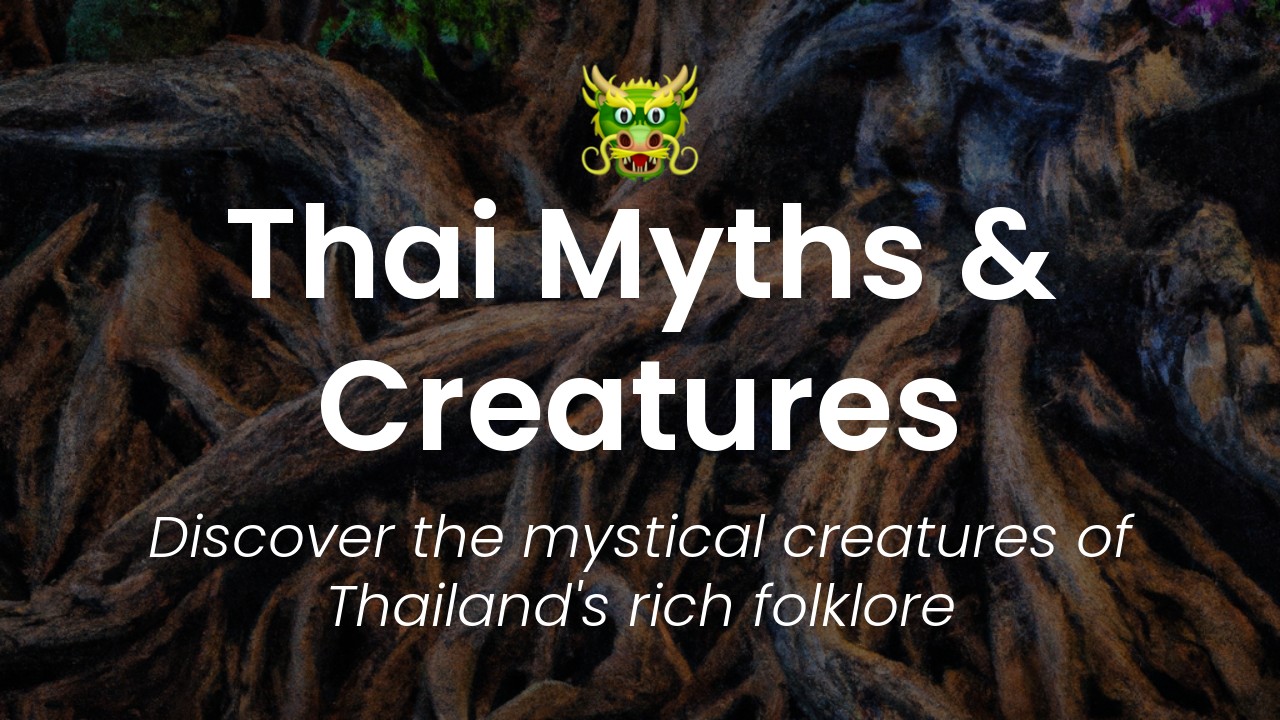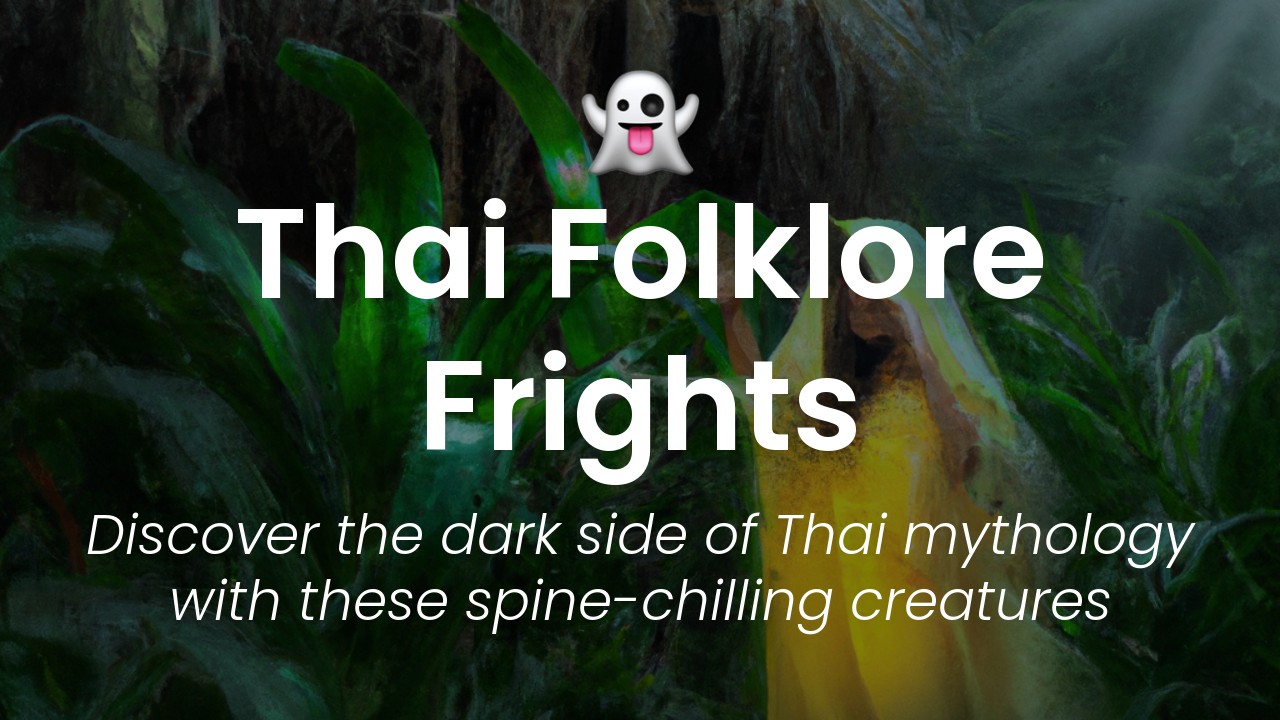As a Thai person, I grew up hearing countless tales of fantastical creatures that roam the earth, the sea, and the heavens. These creatures are a part of our rich mythology that has been passed down from generation to generation. I’ve always been fascinated by the mythical beasts that have been woven into Thai folklore, and I believe that these creatures give us a glimpse into the rich and complex Thai culture.
In this article, I will take you on a journey to uncover some of the most enchanting Thai mythical creatures. From the fierce giants to the gentle gods, these mystical beings have played a vital role in shaping Thai culture, art, and spirituality. I will share what I've learned from my experience growing up in Thailand and the stories that have captured my imagination.
The fantastic creatures of Thai mythology are a reflection of Thai society, lifestyle, and beliefs. They represent the dreams, hopes, and fears of our ancestors. They were created to explain the inexplicable, to remind us of our human frailties and to inspire us to be kind, brave and virtuous. They are fascinating creatures that evoke curious fascination and endow a sense of mystery to our culture. So, without further ado, let’s delve into the vibrant world of Thai mythology and uncover its many wonders!
Naga: The Serpentine Deity
In Hindu and Buddhist mythology, the Naga is a deity that takes the form of a snake-like being. According to Thai beliefs, the Naga is a highly respected and revered creature that resides in the Mekong River. It is regarded as the guardian spirit of water sources and the bringer of fertility. They are often depicted as protectors of Buddha, with their images used as decoration on temple roofs, stairs, and doors.
One famous Naga statue in Thailand is the seven-headed Naga located at the base of the staircase leading to Wat Phra That Doi Suthep, a temple in Chiang Mai. It is believed that these seven heads represent the seven times the Buddha reached enlightenment.
Kinnaree: The Celestial Half-Bird, Half-Human
The Kinnaree is a mythical creature with the upper body of a woman and the lower body of a bird. In Thai folklore, Kinnarees are often depicted as the epitome of feminine beauty and grace, and their songs are said to be mesmerizing.
They are believed to dwell in Himavanta, the mythical forest between the human world and the mythical world. The Kinnaree is often depicted in traditional Thai art, and the creature's image is often seen on furniture and pottery.
Garuda: The National Emblem of Thailand
The Garuda is the national emblem of Thailand, and it is depicted in several Thai temples, coins, emblems, stamps, and flags. The creature's name is derived from the Sanskrit word Garut, which means eagle. According to Thai legend, the Garuda is a bird-like creature with the face of a man and the wings of an eagle.
The Garuda's image symbolizes the power of the king, and it is often depicted carrying the king on its back. According to Thai mythology, the Garuda was born of the god Vishnu and is a revered creature that is believed to be an enemy of the Naga.
Yaksha: The Protective Demonic Beings
The Yaksha are believed to be demonic beings that guard the entrance to temples, banyan trees, and caves. According to Thai folklore, the Yaksha were born of the rain god Prajapati and are regarded as protectors of earth and its resources.
Yakshas are often depicted in Buddhist temples, and their statues can be seen in various poses in Thai culture. They are known to be very protective of their territories and are believed to have supernatural powers that can ward off evil spirits.
Phi: The Ghostly Spirits
The Phi are ghostly spirits that are believed to roam the earth, and Thai folklore depicts them as mischievous beings. They are often depicted as having white skin, black hair, and long fingernails.
In Thai culture, it is believed that the Phi can possess humans, causing sickness and misfortune. Therefore, many Thai people perform rituals and ceremonies to ward off Phi and protect themselves from their influence.
Asura: The Demigods of War
In Thai mythology, the Asura are demigods of war that are often depicted as being aggressive and violent. They are believed to have supernatural powers and are revered for their strength. The Asura are known for their bravery, and their images are often seen in temples and on amulets.
The Asura are believed to protect the temple from malevolent spirits and other enemies and are often used as symbols of strength and power.
Hanuman: The Monkey God of Devotion
The Hanuman is a monkey god in Hindu mythology who is revered for his devotion to his lord, Rama. He is often depicted as a brave and intelligent being who possesses supernatural powers. The Hanuman has become a revered figure in Thailand, and his image can be seen in many statues and paintings throughout the country.
According to Thai folklore, Hanuman is believed to protect against evil spirits and bring good fortune to those who worship him. His image is also believed to bring protection and strength to those who wear it as an amulet.
Conclusion
Thailand's cultural heritage and mythology are rich with enchanting creatures and deities. Their symbolism is embedded in Thai society and culture, and their stories continue to inspire the Thai people. Understanding the cultural significance of these mythical creatures is an important step towards understanding Thai culture and society. The Naga, Kinnaree, Garuda, Yaksha, Phi, Asura, and Hanuman are just some of the many mythical creatures that have made their mark on Thai folklore and continue to inspire awe and wonder.







